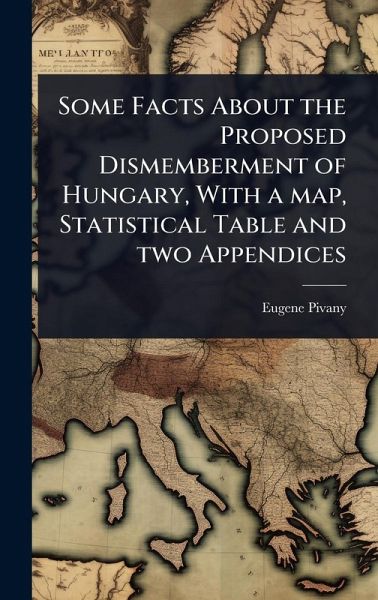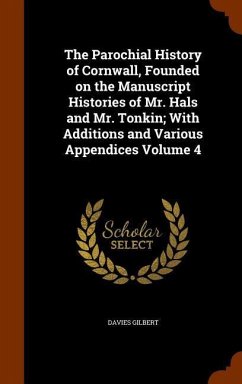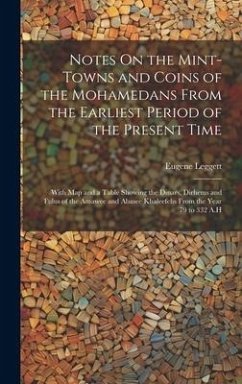
Some Facts About the Proposed Dismemberment of Hungary, With a map, Statistical Table and two Appendices
Versandkostenfrei!
Versandfertig in über 4 Wochen
26,99 €
inkl. MwSt.
Weitere Ausgaben:

PAYBACK Punkte
13 °P sammeln!
âSome Facts About the Proposed Dismemberment of Hungaryâ offers a critical examination of the geopolitical landscape following World War I, focusing on the proposed territorial changes affecting Hungary. Written in 1919, this work by Eugene Pivany provides a detailed analysis, supported by a map and statistical table, presenting arguments against the dismemberment. The book explores the historical context, political motivations, and potential consequences of redrawing Hungary's borders. With appendices providing additional data and insights, this book serves as a valuable resource for unders...
âSome Facts About the Proposed Dismemberment of Hungaryâ offers a critical examination of the geopolitical landscape following World War I, focusing on the proposed territorial changes affecting Hungary. Written in 1919, this work by Eugene Pivany provides a detailed analysis, supported by a map and statistical table, presenting arguments against the dismemberment. The book explores the historical context, political motivations, and potential consequences of redrawing Hungary's borders. With appendices providing additional data and insights, this book serves as a valuable resource for understanding the complexities of post-war Europe and the enduring debates surrounding national identity and territorial integrity. It is essential reading for historians, political scientists, and anyone interested in the legacy of the Treaty of Trianon. This work has been selected by scholars as being culturally important, and is part of the knowledge base of civilization as we know it. This work was reproduced from the original artifact, and remains as true to the original work as possible. Therefore, you will see the original copyright references, library stamps (as most of these works have been housed in our most important libraries around the world), and other notations in the work. This work is in the public domain in the United States of America, and possibly other nations. Within the United States, you may freely copy and distribute this work, as no entity (individual or corporate) has a copyright on the body of the work. As a reproduction of a historical artifact, this work may contain missing or blurred pages, poor pictures, errant marks, etc. Scholars believe, and we concur, that this work is important enough to be preserved, reproduced, and made generally available to the public. We appreciate your support of the preservation process, and thank you for being an important part of keeping this knowledge alive and relevant.












